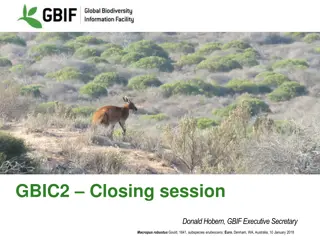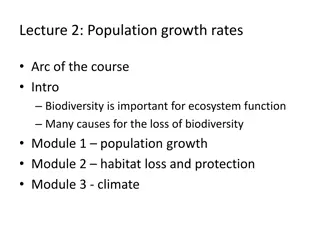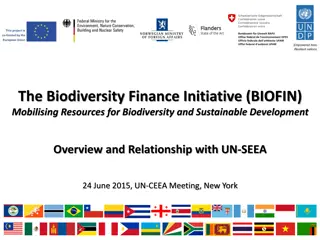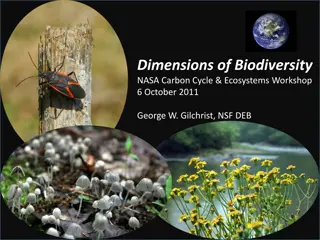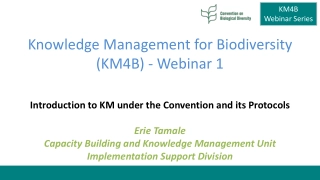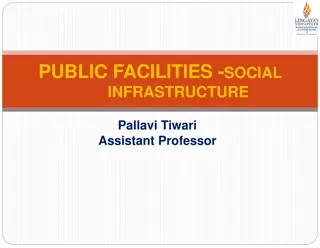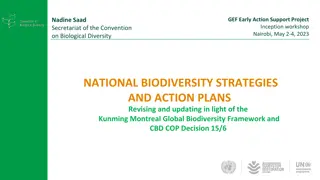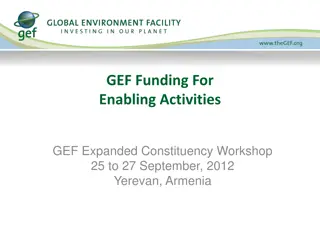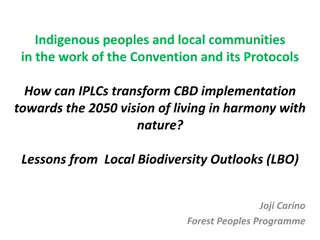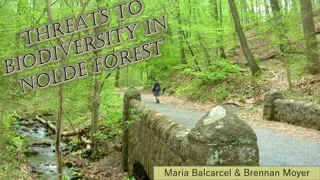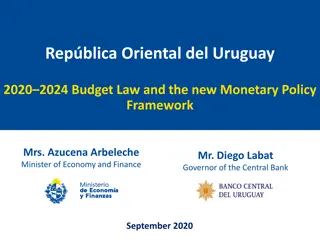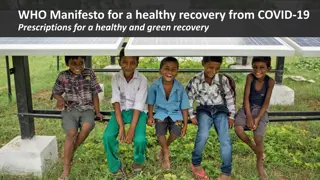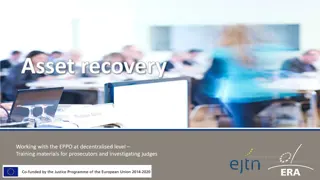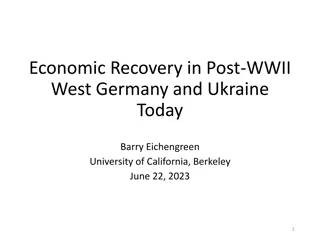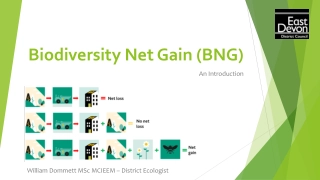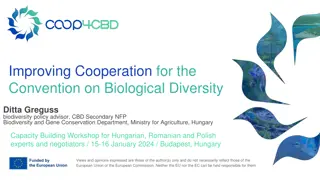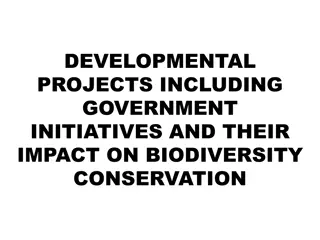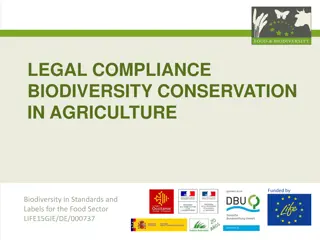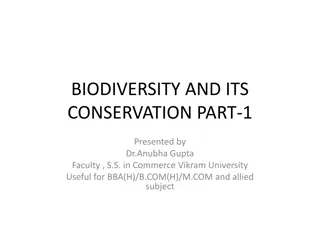Post-COVID Economic Recovery Aligned with Global Biodiversity Goals
Global economic recovery post-COVID presents a crucial opportunity to prioritize biodiversity alongside financial stimuli. Existing recovery packages lack explicit consideration for biodiversity, indicating the need for alignment with post-2020 global biodiversity frameworks to promote green recovery strategies. Measures such as central bank actions, national stimuli, business aid, and safety net support could be restructured to benefit biodiversity positively without compromising economic growth and employment prospects.
Download Presentation

Please find below an Image/Link to download the presentation.
The content on the website is provided AS IS for your information and personal use only. It may not be sold, licensed, or shared on other websites without obtaining consent from the author. Download presentation by click this link. If you encounter any issues during the download, it is possible that the publisher has removed the file from their server.
E N D
Presentation Transcript
Ensuring a Post- COVID Economic Agenda Tackles Global Biodiversity Loss Dr. Pamela McElwee Rutgers University Material for presentation from: P. McElwee, E. Turnout, M. Chiroleu-Assouline, J. Clapp, C. Isenhour, T. Jackson, E. Kelemen, D. Miller, G. Rusch, J. Spangenberg, A. Waldron, R. Baumgartner, B. Bleys, M. Howard, E. Mungatana, H. Ngo, I. Ring, R. dos Santos. 2020. One Earth 3: 448-461. Photo: Street in Jaipur. NuPhoto via Getty Images
Key ideas Finance and economics ministries have a number of tools for COVID recovery that would at a minimum do no harm to biodiversity, and at best, could build a green recovery and tackle drivers of nature loss Given existing size of COVID packages in the trillions of US dollars, this represents an important opportunity to align with post-2020 global biodiversity framework Yet we don t yet see much emphasis on biodiversity and nature in recovery plans (slightly better for climate change)
Current COVID recovery packages Central bank measures (interest rate reductions, emergency bond purchases (QE), other liquidity actions) National measures (VAT and other tax reductions, stimulus spending in health and infrastructure sectors, investment in key industries) Business support (loans and bailouts, tax incentives or reductions, rent relief, procurement or purchasing) Safety net support (unemployment insurance, food subsidies, basic income or cash transfers, education support) BUT few of these measures have taken account of biodiversity explicitly, and some even have negative effects (e.g. reduction of consumption or resource use taxes, relaxation of environmental regulations) Our assessment: All recovery steps should no do harm and many can be retooled to be biodiversity positive, with similarly positive impacts on economic growth and employment
Germany 50b for climate change infrastructur e (electric vehicles, etc) Canada China UK Large corporate recipients of bailout must register carbon disclosures; stimulus financing for methane monitoring Stimulus investment in high speed rail, electric vehicles and power lines 2.5b for cycling infrastructure South Korea New Deal investment in hydrogen, electric vehicles, and energy efficiency France Emissions reduction targets in airline bailout European Union 40b for member state climate neutrality; corporate loans must align with climate goals; 15b to Agr Fund to meet biodiversity 2030 plan India US$780 million for afforestation Pakistan Tree planting incentives, green jobs for youth Positive biodiversity stimulus measures Positive climate stimulus measures Positive climate and biodiversity stimulus measures New Zealand NZ$1.1b for nature-based jobs Uganda Stimulus $ for green jobs
Short term actions Longer term measures Eliminate harmful subsidies and shift to positive ones Public procurement of sustainable goods Increase public support for sustainable agriculture Increase environmental taxation, including bonus-malus schemes and offshore accounts Stimulus relief funds criteria Central bank risk measures & sustainable finance guidelines Ecological fiscal transfers New institutions to encourage private financing Reduce inequality through tax and wage policy, ensure just transitions Rethink production models and create more resilient supply chains Improve circular economies Incentivize greener private investment Disclosure standards, reporting & liability sector Private Consumers Meet bailout conditionality Increase standards for greener private investment Shorter & sustainable supply chains Private sector Rethink excess consumption through nudges, caps and taxes Trade & aid Fairer trade rules Ensure international aid & funding Employment Green work programs and payments for environmental services Universal Basic Income Alternative measures of social welfare New metrics for environmental goods and bads in accounting policies Metrics
One example: Green employment stimulus Government-supported work programs can reduce widespread unemployment& bring biodiversity and climate benefits Conservation jobs are often shovel-ready and among the most economically-effective measures. A study submitted to Australia s government estimates that AUS $4billion in conservation- oriented post-COVID stimulus would create over 50,000 jobs working on nature-related activities In US after 2008 crash, stimulus in the marine restoration sector generated more jobs per million US dollars invested than most other sectors, such as fossil fuels However, currently only a handful of countries have green employment in their COVID packages.
Conclusions There is an urgent need to push biodiversity into economic recovery packages to enable needed transitions to the 2050 Vision Arguments are strong for economic efficiency, employment gains, and equity benefits of biodiversity-focused measures. There is great risk for biodiversity harm in some packages and approaches Key areas ripe for immediate attention: sustainable agriculture, production & supply chains, greener investment, restoration jobs, climate/biodiversity nexus approaches (Nature-based solutions, etc) Environment ministries should work hand in hand with finance ministries to design appropriate packages with both short-term stimulus and long-term recovery options. Follow-up and monitoring should be a priority (e.g. asking for stimulus tracking reports at COP15)




